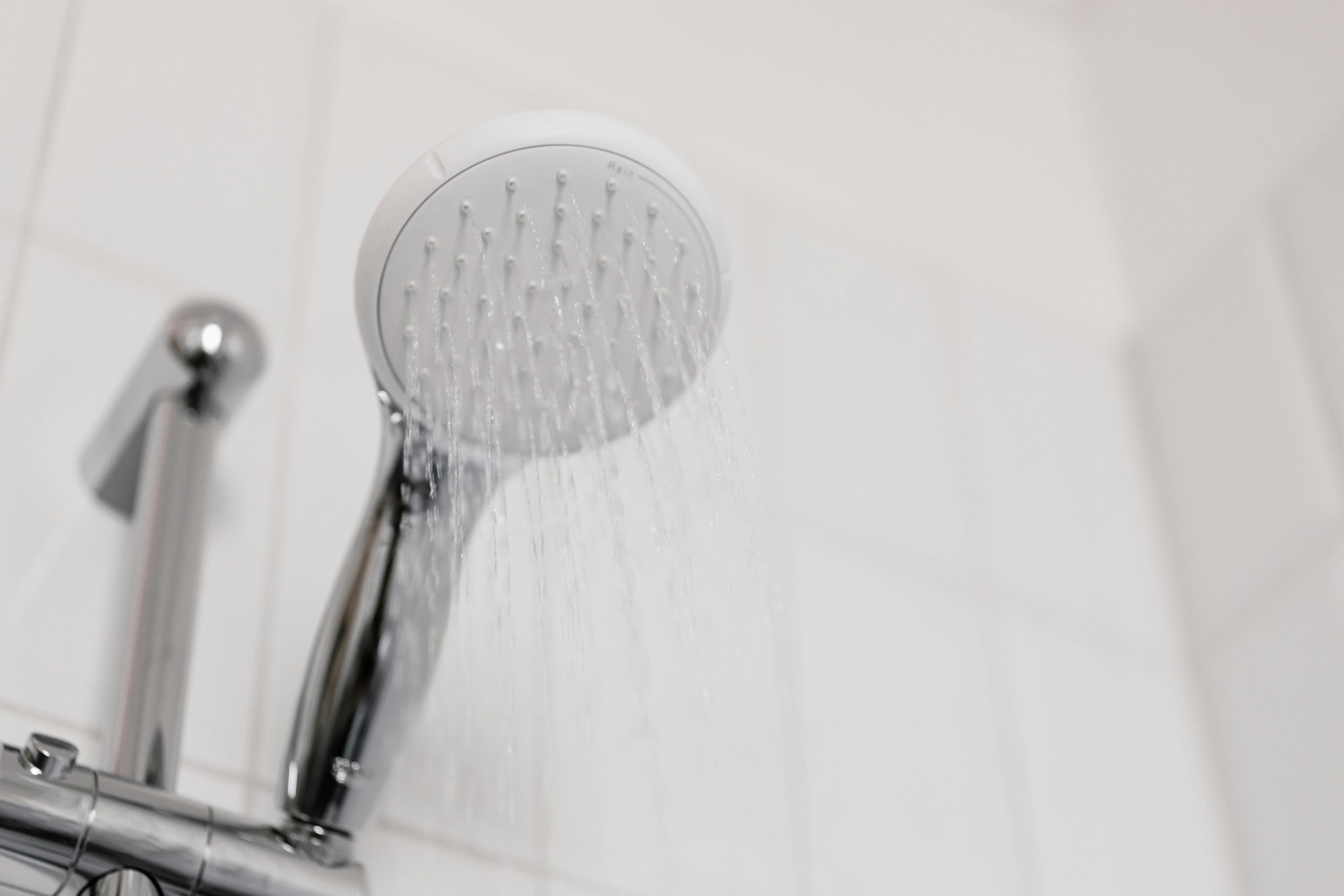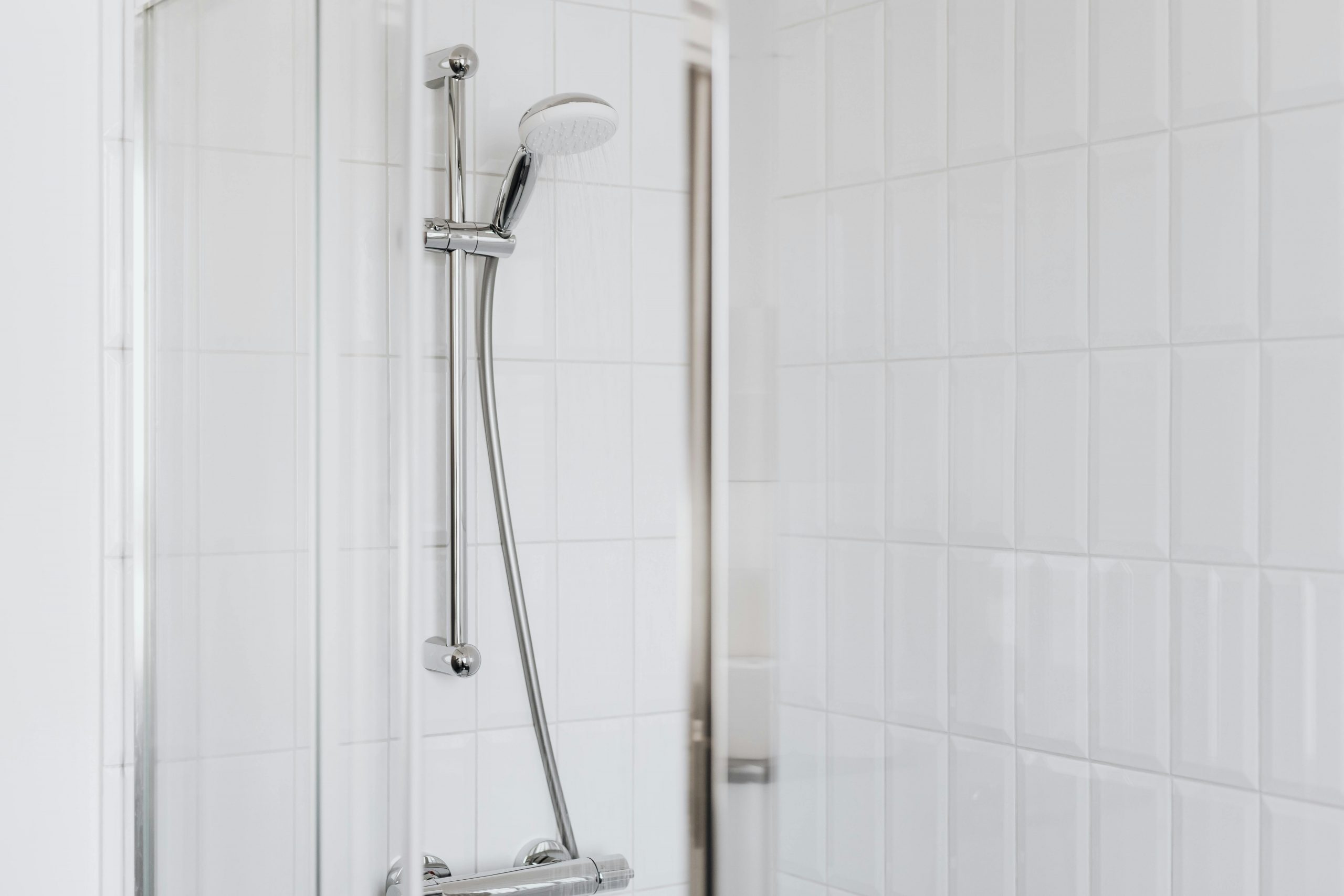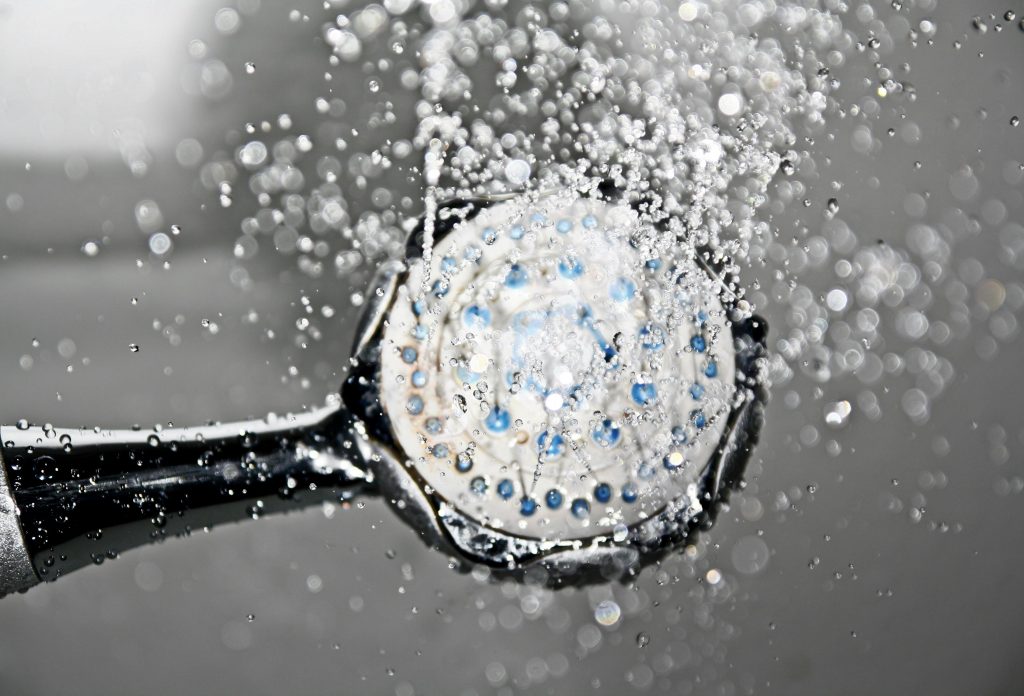A weak shower can be frustrating, especially when you’re expecting a strong, refreshing spray to start your day. If you’ve ever stood under a trickling stream and wondered why your shower pressure is so low, you’re not alone. The good news is there are many simple ways to fix it—often without calling a plumber.
This guide will walk you through everything you need to know about how to increase water pressure in the shower. Whether it’s cleaning the showerhead, adjusting a valve, or replacing old parts, we’ll keep the steps easy to follow and cost-friendly.
- What Causes Low Water Pressure in the Shower?
- Step-by-Step: How to Increase Water Pressure in Your Shower
- 1. Check for Clogs in the Showerhead
- 2. Remove the Flow Restrictor
- 3. Inspect and Open Shut-Off Valves
- 4. Install a High-Pressure Showerhead
- 5. Clean or Replace Shower Hose (for Handheld Models)
- 6. Check for Leaks
- 7. Adjust or Replace the Pressure Regulator
- 8. Test Water Pressure with a Gauge
- 9. Call Your Water Provider
- 10. Upgrade Your Plumbing
- What Not to Do
- Extra Tip: Try a Shower Pump
- When to Call a Professional
- Final Thoughts
What Causes Low Water Pressure in the Shower?

If your shower stream feels more like a drip, you’re probably dealing with low water pressure. But before you jump into fixing it, it’s important to understand what might be causing the problem. There are several common reasons why your shower isn’t delivering the strong flow you want.
- Clogged Showerhead: One of the most common causes is a blocked showerhead. Over time, minerals from hard water can build up inside the tiny holes of your showerhead. This restricts the flow of water and lowers the pressure. Cleaning or replacing the showerhead is often a quick fix.
- Partially Closed Valves: Your home’s water pressure depends on valves being fully open. If your main water valve or the valve connected to the shower is only partially open, it limits the amount of water reaching your shower.
- Old or Low-Flow Showerhead: Older showerheads or water-saving models may not be designed for high pressure. While they help conserve water, they can also reduce flow and make your shower feel weak.
- Low Pressure from the Main Water Supply: Sometimes the issue isn’t inside your home. Your municipal water supply could be delivering water at a low pressure due to infrastructure issues or neighborhood demand.
- Plumbing Leaks: Leaks in your plumbing system can reduce the amount of water that reaches your shower. Even small leaks can make a noticeable difference in pressure.
- Faulty Pressure Regulator: If your home has a water pressure regulator and it’s malfunctioning, it may be restricting flow to your shower and other fixtures.
Understanding these causes is the first step to fixing low water pressure and getting your shower back to full power.
Step-by-Step: How to Increase Water Pressure in Your Shower
1. Check for Clogs in the Showerhead

One of the easiest and most common fixes for low water pressure in the shower is checking for clogs in the showerhead. Over time, minerals from hard water can build up and block the tiny nozzles, making the water flow weak or uneven.
Steps to clean your showerhead:
- Step 1: Carefully unscrew the showerhead from the pipe.
- Step 2: Place the showerhead in a bowl or container filled with white vinegar. Let it soak for at least a few hours—overnight is even better if buildup is heavy.
- Step 3: After soaking, use an old toothbrush or a toothpick to gently scrub and remove any remaining mineral deposits inside the nozzles.
- Step 4: Rinse the showerhead thoroughly with water and screw it back onto the pipe.
Tip: To keep water flowing freely, clean your showerhead every few months, especially if you live in an area with hard water.
2. Remove the Flow Restrictor
Many modern showerheads include a flow restrictor. This small plastic disc is designed to reduce the amount of water that comes out of the showerhead, helping to conserve water and lower utility bills. While that’s great for the environment, it can sometimes cause your shower to feel weak or unsatisfying—especially if your home already has low water pressure.
Steps to remove the flow restrictor:
- Step 1: Carefully unscrew the showerhead from the shower arm using your hands or a wrench (wrap it in a towel to avoid scratches).
- Step 2: Look inside the connection end of the showerhead for a small plastic disc—usually colored green, blue, or white.
- Step 3: Use tweezers, a small screwdriver, or a paperclip to gently pry out the restrictor. Be careful not to damage other parts.
- Step 4: Rinse the showerhead to remove any loose debris and reattach it.
- Step 5: Turn on the water and check if the pressure has improved.
Note: Flow restrictors are required in some regions to meet water conservation laws. Make sure to check your local regulations before removing one.
3. Inspect and Open Shut-Off Valves
Sometimes, the reason for low water pressure in your shower is as simple as a valve that isn’t fully open. Your plumbing system has several shut-off valves that control water flow. If any of these valves are partially closed, it can restrict the amount of water reaching your shower.
Steps:
- Step 1: Locate the main water shut-off valve. This is usually found near your water meter, in a basement, crawlspace, utility room, or outside near where the main water line enters your home.
- Step 2: Check to see if the valve is fully open. Most main valves are either a round handle (turn counterclockwise to open fully) or a lever-style valve (make sure it’s parallel to the pipe for full flow).
- Step 3: If your home has individual shut-off valves for bathrooms or fixtures, check those too. These might be behind an access panel or under the sink. Make sure they’re also fully open.
Opening all valves completely ensures your shower gets maximum water flow. This simple check can instantly improve pressure if a valve was accidentally turned.
4. Install a High-Pressure Showerhead
Upgrading to a high-pressure showerhead is one of the easiest and most effective ways to improve water pressure in your shower. These showerheads are specially designed to maximize water flow, even if your home has naturally low water pressure. They work by using smaller, precision-engineered nozzles or pressure-boosting features that increase the force of the water coming out.
What to Look For:
- High PSI Rating: PSI (pounds per square inch) measures water pressure. Look for a showerhead rated for high PSI to ensure stronger flow.
- Pressure-Boosting Technology: Some models use air infusion or other mechanisms to amplify water pressure without using more water.
- Easy Installation: Many high-pressure showerheads are designed for DIY installation and simply screw onto your existing shower arm—no tools required.
- Water Efficiency: Choose a model that balances pressure with water-saving features. Look for WaterSense-labeled products that help reduce water usage while still delivering a strong stream.
Swapping out your old showerhead for a high-pressure model can make your showers feel more powerful and refreshing, all without complex plumbing changes.
5. Clean or Replace Shower Hose (for Handheld Models)
If you’re using a handheld showerhead, the hose can sometimes be the reason behind weak water pressure. Over time, mineral deposits, soap scum, or kinks in the hose can restrict water flow and reduce pressure.
Steps to Fix the Problem:
- Detach the Hose: Unscrew the shower hose from both the showerhead and the water outlet.
- Check for Kinks or Buildup: Look for sharp bends, twists, or signs of mineral deposits inside the hose.
- Flush It Out: Run water through the hose to remove any loose debris. For tough buildup, soak it in a mixture of vinegar and water for about an hour, then rinse thoroughly.
- Inspect for Damage: If the hose is cracked, brittle, or leaking, it’s best to replace it with a new one.
A clean, flexible hose ensures water can flow freely to your handheld showerhead, improving overall pressure and performance.
6. Check for Leaks
Leaks in your plumbing system can significantly reduce water pressure in your shower. When water escapes through cracks or loose joints in the pipes, less of it reaches your showerhead—leading to weak or inconsistent flow.
How to Check for Leaks:
- Look for Visible Signs: Inspect areas around your bathroom walls, ceilings, and floors for water stains, peeling paint, mold, or mildew. These can all indicate a leak behind the surface.
- Feel for Moisture: Run your hand along accessible pipes or walls near the shower. If anything feels damp or wet, that’s a red flag.
- Watch Your Water Bill: A sudden spike in your water bill without a clear reason could point to an unseen leak.
- Listen Carefully: In a quiet room, you might hear a faint dripping or running water sound, even when everything is turned off.
Tip: If you suspect a hidden or serious leak, don’t try to fix it yourself. Contact a licensed plumber to inspect and repair it. Fixing leaks not only restores your water pressure but also prevents costly water damage down the road.
7. Adjust or Replace the Pressure Regulator
A pressure regulator controls the water pressure coming into your home from the main supply line. If it’s set too low or has worn out over time, it can cause low water pressure in your shower and other fixtures.
Steps to Adjust or Replace It:
- Locate the Regulator: Look for a bell-shaped device near the main shut-off valve—usually where the water line enters your home.
- Adjust the Pressure: Using a wrench, turn the adjustment screw on the regulator clockwise to increase the pressure. Make small adjustments and test your water flow each time.
- Monitor the Change: If the pressure improves, your regulator just needed adjusting. If there’s no change or the pressure is still inconsistent, the regulator could be faulty.
- Replace if Necessary: A worn-out regulator may need to be replaced. This is not a beginner DIY task.
Caution: Working with water pressure settings can affect your whole plumbing system. If you’re unsure about making adjustments or replacing the regulator, it’s safest to call a professional plumber to handle the job correctly and safely.
8. Test Water Pressure with a Gauge
Before making major changes, it’s helpful to confirm whether you actually have low water pressure. The best way to do this is by using a water pressure gauge. This simple tool gives you an accurate reading of your home’s water pressure.
Steps:
- Attach the Gauge: Screw the water pressure gauge onto an outdoor faucet, laundry hose, or a hose bib—someplace where water flows directly from your home’s plumbing.
- Turn on the Water: Fully open the faucet or valve to allow maximum flow.
- Read the Gauge: The needle will move to show your water pressure. Normal residential water pressure typically ranges between 40 and 60 PSI (pounds per square inch).
- Evaluate the Results:
- If the pressure reads below 40 PSI, your home likely has low water pressure and could benefit from the tips in this guide.
- If it reads above 60 PSI, your pressure is good—or possibly even too high, which could wear out your plumbing over time.
Using a gauge is a quick, affordable way to diagnose pressure issues before taking further action.
9. Call Your Water Provider
If you’ve checked all the possible causes inside your home and still have low water pressure, the problem might be with your water supplier. Sometimes issues like maintenance work, pipe breaks, or pressure restrictions outside your property can affect your water flow.
Steps:
- Contact Your Water Provider: Call your local water utility company and explain the low pressure you’re experiencing.
- Ask About Known Issues: Inquire if there are any ongoing repairs, maintenance, or water restrictions that could be affecting your area.
- Request a Pressure Check: If needed, ask them to check the water pressure at the meter to ensure everything is working properly on their end.
Getting confirmation from your water provider can save you time and help you understand if the problem is beyond your control. If they find an issue, they’ll typically schedule repairs or give you an estimated timeline for fixing the problem.
10. Upgrade Your Plumbing
In older homes, the plumbing system might be the reason for low water pressure. Pipes that are narrow, corroded, or made from outdated materials can restrict water flow and reduce shower pressure.
Signs You Might Need an Upgrade:
- Your home is over 30 years old.
- You experience frequent plumbing problems like leaks or clogs.
- Your pipes are made from galvanized steel, which tends to rust and accumulate buildup inside.
Solution:
Replacing old pipes with modern materials such as PEX (cross-linked polyethylene) or copper can greatly improve water flow and pressure throughout your home. While this is a bigger project than simply cleaning a showerhead or adjusting valves, upgrading your plumbing can solve persistent pressure problems and add value to your home. If you suspect your pipes are the issue, it’s best to consult a licensed plumber for an inspection and advice on replacement options.
What Not to Do
- Don’t Use Multiple Fixtures at Once: Using the dishwasher, washing machine, and shower at the same time can cause low pressure.
- Don’t Force Parts: When removing parts like restrictors, be gentle. Damaging your showerhead could lead to leaks.
- Avoid Chemical Cleaners: These can corrode metal parts. Stick to vinegar or mild soap.
Extra Tip: Try a Shower Pump
If you’ve tried all the above and still have weak pressure, a shower pump could be your best bet. This device increases water flow and is often used in homes with gravity-fed systems.
Note: Pumps may need professional installation and aren’t legal in all areas, so check local codes.
When to Call a Professional
If you’ve tried every DIY option and still have low water pressure in the shower, it may be time to call a plumber. A pro can:
- Find and fix hidden leaks
- Replace faulty parts
- Upgrade plumbing
- Adjust your pressure regulator safely
Getting expert help is especially important if you notice water damage, mold, or sudden drops in pressure.
Final Thoughts
Low shower pressure can be annoying, but it’s usually fixable. From cleaning your showerhead to installing a new high-pressure model, small steps can make a big difference.
Take time to check each part of your shower and plumbing system. If you’re still stuck, calling a professional might be your best move.
With these tips, you’ll soon enjoy the strong, satisfying shower you deserve—without spending a fortune.

